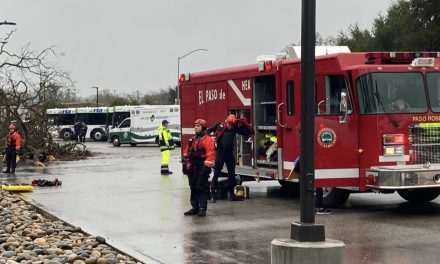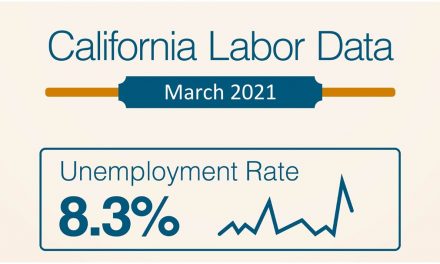Trucking laws continue to concern farmers
By Caleb Hampton
California Farm Bureau Federation
CALIFORNIA — With the New Year comes a slew of new state and federal policies designed to change the way farms and ranches in California operate. As of Jan. 1, several new laws and regulations will affect agriculture, natural resources and transportation.
Recent criticism of California’s water-rights system by environmental groups led to the introduction last year of three water-rights “reform” bills in the state Legislature, one of which became law.
Senate Bill 389, authored by state Sen. Ben Allen, D-Santa Monica, gives the California State Water Resources Control Board authority to investigate whether rights of a water user are valid and impose sanctions for unauthorized diversions.
State law already allowed the water board to investigate the claims of water users in California and take action against unauthorized diversions. California Farm Bureau senior policy advocate Alexandra Biering explained that SB 389 “simply clarifies the water board’s powers.”
While state law previously enabled the water board to investigate water rights only at the request of another water-rights holder, the new law allows the water board to investigate water rights at will. The bill also clears up a gray area in the state water code, authorizing the water board to investigate California’s most senior water rights: pre-1914 and riparian rights.
Biering said the bill includes provisions to ensure water rights are not investigated frivolously but “only when truly necessary.”
California farmers may have greater access to useful technologies in the coming year. Signed in October, Assembly Bill 1016 authorized California’s Department of Pesticide Regulation to modernize the certification process for farmers to use drones to spray pesticides and beneficial biological treatments on their farms.
The bill was authored by Assembly Member Reggie Jones-Sawyer, D-Los Angeles, and sponsored by the California Farm Bureau. It was spearheaded by San Diego County farmer Al Stehly after he encountered a burdensome regulatory process when trying to get certified to use drones to apply pesticides on his vineyards.
Farmers worldwide have used drones to improve worker safety, lower costs, conserve water and increase crop yields.
“The technology allows you to use (applications) in areas where you previously couldn’t because it’s so targeted,” said Christopher Reardon, government affairs director for the California Farm Bureau. “This bill is a very good thing.”
Farmers will likely see changes to property insurance options this year, though not immediately. Another bill sponsored by the Farm Bureau, Senate Bill 505, will take effect “on or after” July 1.
The bill, authored by state Sen. Susan Rubio, D-Baldwin Park, was created to improve commercial property insurance options for people who have lost coverage due to wildfire risk.
In recent years, cancellations of insurance policies in fire-prone areas have dealt a blow to farm businesses. Without insurance, farmers and ranchers may not be eligible for the loans they need to purchase the properties, structures or equipment they need to run their business.
Many farmers whose policies were non-renewed have sought coverage under the California FAIR Plan, the state’s insurer of last resort. However, FAIR Plan policies are intended only as a temporary option. The policies are expensive and do not provide comprehensive coverage.
To help policyholders leave the FAIR Plan, the program has a clearinghouse where insurance companies can browse policies and make coverage offers. Currently, the clearinghouse lists only residential policies, not commercial ones, preventing farmers from bringing all their properties back under the same, competitive insurance policy.
Under SB 505, commercial policies will be added to the FAIR Plan clearinghouse.
Last year, after several major insurance companies stopped or limited their writing of new policies in California due to wildfire risk, state Insurance Commissioner Ricardo Lara announced California will loosen some regulations in exchange for a commitment from insurance companies to provide coverage to property owners in fire-prone areas.
The insurance commissioner estimated it would take at least a year to reform the state’s regulatory requirements. “This isn’t going to happen overnight,” Reardon said, adding that the state government has “made a commitment that the (insurance) companies will be back.”
Several regulations from the California Air Resources Board will impact trucking operations this year. The mandates are part of a broader effort announced by Gov. Gavin Newsom in 2020 to reduce vehicle emissions.
The Advanced Clean Fleets regulation was adopted last year. The landmark rule will phase out most diesel trucks in California over the next two decades, beginning this year. It also applies to tractors that weigh more than 8,500 pounds.
All companies with 50 or more vehicles or at least $50 million in annual revenues and to all federal agencies, such as the U.S. Postal Service, are subject to the rule.
Agricultural and trucking industry groups raised concerns that the rule could have unintended consequences if the electrical grid, vehicle technology or charging infrastructure for zero-emission vehicles are not in place before companies are forced to transition.
“We are extremely concerned that the proposed ACF rule will be unworkable in the real world and could result in compromising the delivery of essential goods and services to Californians,” a coalition of commercial, transportation and agricultural organizations, including the California Farm Bureau, wrote in a letter to the air resources board.
For now, business owners can continue to operate their diesel trucks, but the rule requires that fleets start phasing in zero-emission vehicles this year either by replacing any decommissioned trucks with electric vehicles or by converting at least 10 percent of their fleet to zero-emission vehicles by 2025.
“There is a big infrastructure problem,” said Katie Little, senior policy advocate for the California Farm Bureau. “There isn’t even enough charging capacity in urban areas let alone rural areas.”
Little added that shipping delays caused by insufficient infrastructure could be disastrous due to the nature of agricultural freight. “We can’t have tomatoes, milk or livestock sitting in the sun,” she said. “Our goods are perishable.”
The rule includes exemptions for infrastructure and supply delays, but the burden is on the business owner to apply for a waiver.
Another new rule from the air resources board, called Clean Truck Check, is aimed at ensuring heavy-duty vehicles are properly maintained and not producing more emissions than they should. This rule went into effect Oct. 1. It requires vehicle owners to enter their vehicles in a Clean Truck Check database and pay an annual fee of $30 per vehicle.
As of Jan. 1, all trucks in California must have proof of compliance with the rule to continue operating. Beginning in July, the rule will require vehicle owners to conduct emissions testing, similar to a smog test, every two years. Agricultural vehicles must get tested every year.
In addition to legislative and regulatory changes, California entered the new year with a record $68 million budget shortfall. Reardon said funding for agricultural programs could be sacrificed as the governor and Legislature are “going to have to make real cuts this year.”
He added that initiatives such as the Healthy Soils Program that are meant to help farmers transition to climate-friendly practices could be in the crosshairs.
“A lot of the programs that (the California Department of Food and Agriculture) oversees could be in jeopardy,” he said.
At the federal level, as of Jan. 1, farm employers who hire H-2A workers must pay the workers a higher wage after the U.S. Department of Labor announced it was raising the Adverse Effect Wage Right, or AEWR, for the program.
The AEWR is the minimum hourly rate for agricultural guestworkers. In California, the rate increased from $18.65 to $19.75. The state’s overall minimum hourly wage for all employees also increased Jan. 1, rising from $15.50 to $16.
Amid a nationwide labor shortage and increasing reliance on the H-2A program, farm groups have raised concerns about the cost of the program to farmers.
“As wage rates continue to rise along with the demand for farmworkers, farm families are being forced to take a hard look at their balance sheets just to stay afloat,” American Farm Bureau Federation President Zippy Duvall said.
Feature Image by Mandy Evenson Photography














